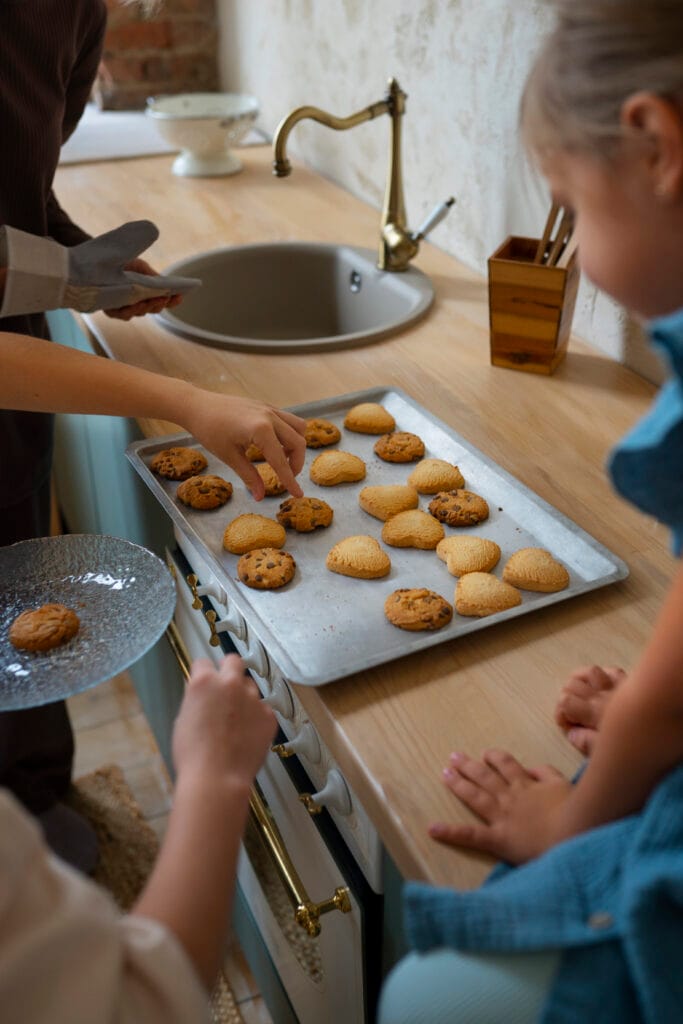Thumbprint cookies are a timeless treat that balances buttery cookie bases with delightful fillings in their center. Popular across generations and during festive seasons, these cookies charm with their simplicity and endless customization. Yet, there’s one question that often perplexes bakers: should you fill thumbprint cookies before or after baking? This decision can drastically alter the cookie’s taste, texture, and presentation.
This comprehensive guide will explore both methods, their benefits, drawbacks, and tips to help you decide. We’ll also address common challenges and provide expert advice on making perfect thumbprint cookies every time.
What Happens When You Fill Thumbprint Cookies Before Baking?
Thumbprint cookies, often referred to as jam drops, are small cookies with a signature indentation in the center. This indentation, created before baking, is typically filled with sweet or savory options like jam, chocolate, or icing. These cookies are simple to make and allow endless creativity, making them a favorite for holiday baking.
To learn about the origins and history of thumbprint cookies, check out this Wikipedia entry on thumbprint cookies.
Their simplicity makes them ideal for beginners, yet they provide enough room for creativity to keep seasoned bakers intrigued. For example, try unique variations like peanut butter thumbprint cookies for a nutty twist.
Why Choose to Fill Thumbprint Cookies After Baking?
Filling the cookies before baking is the classic way of preparing thumbprint cookies. It allows the filling to bake alongside the dough, creating an integrated flavor and texture.
Advantages of Filling Before Baking
- Flavor Integration
- When fillings like jam or caramel bake with the cookie dough, they blend flavors, creating a cohesive and delightful bite.
- Secure Fillings
- Fillings added before baking stay firmly in place, minimizing the risk of spilling or leaking during transport or storage.
- One-Step Process
- With this approach, the entire cookie-making process is completed in one go, saving time and effort.
- Classic Look
- Pre-baked fillings often have a rustic, homemade charm that appeals to many.
Challenges of Filling Before Baking
- Overcooked Fillings
- Heat-sensitive fillings like chocolate or fruit spreads can overcook, lose flavor, or caramelize too much.
- Color Changes
- Vibrant fillings may darken or lose their visual appeal.
If you’re facing common challenges like cracking cookies or uneven baking, refer to why thumbprint cookies crack for practical solutions.
Filling After Baking: The Modern Approach
Filling thumbprint cookies after baking is a contemporary alternative that focuses on the freshness and aesthetic appeal of the fillings. This method is particularly useful for delicate or visually stunning toppings.
Advantages of Filling After Baking
- Fresh, Vibrant Fillings
- Post-baked fillings retain their flavor, color, and texture, making them ideal for icings, ganache, or fresh fruit preserves.
- Customizable Options
- Different fillings can be added to the same batch of cookies, catering to diverse tastes or dietary preferences.
- Polished Presentation
- This approach allows for more refined and professional-looking cookies.
Challenges of Filling After Baking
- Extra Effort
- Adding fillings post-baking requires additional steps and time.
- Stability Issues
- Fillings added after baking may not adhere as securely to the cookie, making them less durable for transport.
For inspiration on creating visually appealing holiday cookies, check out most popular Christmas cookies.

How to Perfectly Fill Thumbprint Cookies After Baking
Deciding whether to fill your thumbprint cookies before or after baking depends on several factors, including the type of filling and your personal preferences.
Filling Type
- Pre-Baking: Suitable for jam, caramel, or peanut butter, as these fillings bake well and integrate seamlessly with the dough.
- Post-Baking: Ideal for delicate or creamy fillings like whipped cream, chocolate ganache, or frosting, which might melt or curdle in the oven.
Texture Preferences
- Pre-Baking: Offers a gooey, melted texture that blends into the cookie.
- Post-Baking: Preserves the distinct textures of the cookie and filling.
Presentation Goals
- Rustic Appeal: Pre-baking gives a homemade, comforting look.
- Refined Look: Post-baking allows for precise decoration and polished finishes.
Expert Tips for Filling Thumbprint Cookies the Right Way
Regardless of your chosen method, these tips can help you master the art of thumbprint cookies:
Preventing Dough Cracks
- Chill the dough before shaping it to prevent spreading and cracking during baking.
- Use consistent pressure when creating the indentation to avoid tearing the dough.
Using the Right Tools
- A small spoon or the back of a measuring spoon works perfectly for creating even indentations.
Enhancing Flavor
- Add a pinch of salt to balance sweetness.
- Experiment with extracts like vanilla, almond, or citrus for a unique twist.
For more decoration ideas, see fork marks on cookies for inspiration.
Step-by-Step Guide: Filling Before and After Baking
Method 1: Filling Before Baking
- Prepare the Dough: Mix the cookie dough and chill it for 30 minutes.
- Shape the Cookies: Roll the dough into small balls and create indentations.
- Add the Filling: Spoon your chosen filling (e.g., jam or caramel) into the indentation.
- Bake: Bake according to your recipe’s instructions until golden brown.
Method 2: Filling After Baking
- Prepare and Bake the Cookies: Follow the same steps as above, but leave the indentations empty.
- Cool Completely: Allow the cookies to cool before adding the filling.
- Add the Filling: Pipe or spoon your filling into the indentations.
- Decorate: Dust with powdered sugar or drizzle with chocolate for an elegant finish.
Creative Filling Ideas for Thumbprint Cookies
- Traditional Fillings: Strawberry jam, apricot preserves, or caramel.
- Modern Fillings: Lemon curd, cream cheese frosting, or Nutella.
- Festive Fillings: Peppermint ganache, eggnog icing, or cranberry sauce.
FAQs: Should You Fill Thumbprint Cookies Before or After Baking?
What are the best fillings for thumbprint cookies?
Popular fillings include jams, caramels, chocolate ganache, and whipped cream. For unique ideas, try marshmallow fluff or citrus curd.
How do you keep the cookie shape intact during baking?
Chilling the dough and using a silicone baking mat can help maintain the shape.
Can you use store-bought fillings?
Absolutely! Store-bought jams or icings save time, but homemade options often taste better.
Why do thumbprint cookies crack?
This can happen if the dough is too dry or overworked. Refer to why thumbprint cookies crack for more tips.
Conclusion: Which Method is Best?
Ultimately, the decision to fill thumbprint cookies before or after baking depends on your priorities. If you want a cohesive, melted filling, the pre-baking method is ideal. For fresh, visually stunning fillings, opt for post-baking.
Experiment with both methods to discover what works best for your style and preferences. With a little practice and creativity, you’ll be crafting picture-perfect thumbprint cookies in no time.
Happy baking!

